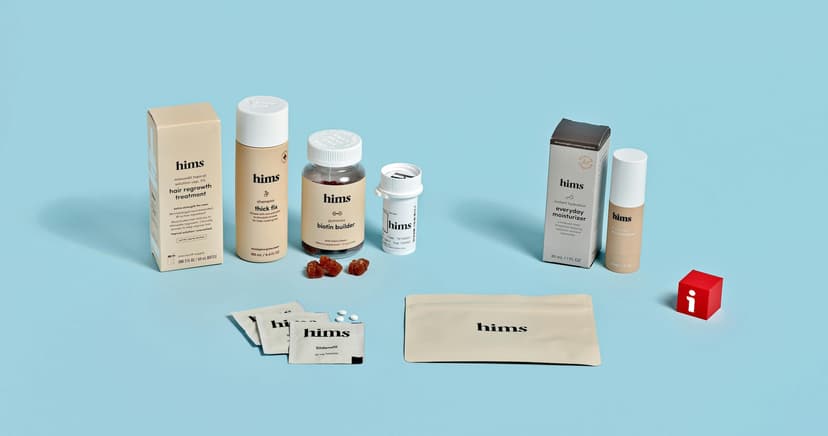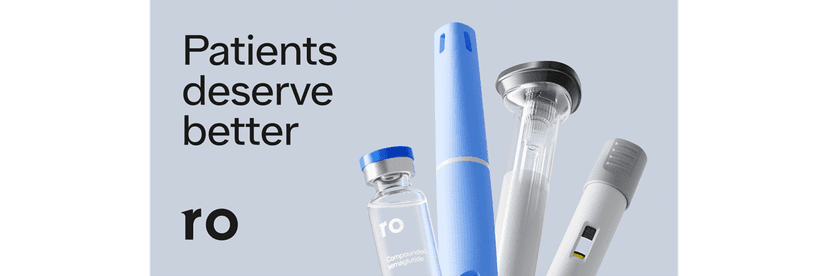Testosterone Replacement Therapy (TRT) is a treatment designed to boost testosterone levels in men who have low levels of this important hormone. Testosterone is crucial for many male characteristics and overall health. This article will help you understand what TRT is, how it works, its benefits and risks, and how it compares to performance-enhancing steroids.
Key Takeaways
- TRT is used to treat men with low testosterone levels.
- Common methods of TRT include injections, patches, gels, and oral medications.
- Benefits of TRT can include improved mood, energy, and sexual function.
- TRT has potential side effects and long-term risks, so it should be monitored by a doctor.
- It's important to consult a healthcare provider to determine if TRT is right for you.
Understanding Testosterone Replacement Therapy
What is Testosterone Replacement Therapy?
Testosterone Replacement Therapy (TRT) involves using treatments like shots, patches, or gels to bring testosterone levels back to normal. Testosterone is a hormone made in the testicles and is key for male traits. TRT helps those with low testosterone feel better and regain their energy.
How Does Testosterone Replacement Therapy Work?
TRT works by adding testosterone to the body. This can be done in several ways, such as:
- Injections: Given directly into the muscle.
- Patches: Worn on the skin and changed regularly.
- Gels: Applied to the skin and absorbed.
Each method has its pros and cons, and a doctor can help decide which is best for you.
Who Needs Testosterone Replacement Therapy?
TRT is for men who have low testosterone levels. Symptoms of low testosterone include feeling tired, mood changes, and low sex drive. A doctor will do tests to check your levels and see if TRT is right for you.
It's important to talk to a healthcare provider to understand if TRT is the right choice for your health needs.
Causes and Symptoms of Low Testosterone
Common Causes of Low Testosterone
Low testosterone can be caused by a variety of factors. Aging is one of the most common causes, as testosterone levels naturally decline with age. Other causes include:
- Injury or infection of the testes
- Chemotherapy or radiation treatment for cancer
- Chronic diseases such as diabetes and obesity
- Hormonal disorders
- Certain medications
Recognizing Symptoms of Low Testosterone
The symptoms of low testosterone can vary and may be subtle. Common symptoms include:
- Low sex drive
- Erectile dysfunction
- Fatigue and low energy levels
- Decrease in muscle mass
- Increase in body fat
- Loss of body and facial hair
- Difficulty concentrating
- Depression and irritability
- Low sense of well-being
- Low sperm count
It's important to note that these symptoms can also be caused by other health conditions, so it's crucial to consult a healthcare provider for a proper diagnosis.
When to See a Doctor
If you experience any of the symptoms mentioned above, it may be time to see a doctor. A healthcare provider can perform a blood test to determine if you have low testosterone levels. Early diagnosis and treatment can help manage symptoms and improve quality of life.
Methods of Administering TRT
Injections
Injections are a common way to get testosterone. They are usually given every 1 to 2 weeks or sometimes every 10 to 12 weeks. This method is popular because it doesn't need to be done every day. But, it can cause pain and bruising where the shot is given. Some people also notice their symptoms come back just before their next shot.
Patches and Gels
Patches and gels are another way to take testosterone. You put them on your skin every day. They are easy to use but can cause skin irritation. You also have to be careful not to let others touch the area where you applied the gel.
Oral Medications
Oral medications are pills you take by mouth. They are easy to take but need to be taken every day. Some people might find this method more convenient, but it can be hard on your liver.
It's important to talk to your doctor about which method is best for you. Each method has its pros and cons, and what works for one person might not work for another.
Benefits and Risks of Testosterone Replacement Therapy
Potential Benefits
Testosterone Replacement Therapy (TRT) can offer several benefits for those with low testosterone levels. One of the most noticeable benefits is an increase in muscle mass and a reduction in body fat. Many people also experience improved mood and energy levels. Other potential benefits include:
- Enhanced libido and sexual performance
- Better bone density
- Improved cognitive function
Possible Side Effects
While TRT can be beneficial, it also comes with potential side effects. Some common side effects include:
- Acne and oily skin
- Lower sperm count, which can lead to infertility
- Shrinkage of the testicles
- Larger breasts
Long-Term Risks
Long-term use of TRT may carry additional risks. These can include an increased risk of heart attack and stroke, as well as a higher likelihood of developing blood clots. It's crucial to discuss these risks with your healthcare provider to make an informed decision.
Always consult your doctor to weigh the benefits and risks before starting TRT. Regular monitoring can help manage any potential side effects or long-term risks.
How to Get Started with TRT
Consulting a Healthcare Provider
The first step in starting testosterone replacement therapy (TRT) is to consult a healthcare provider. A doctor who specializes in hormone therapy can help determine if TRT is right for you. They will review your medical history, discuss your symptoms, and perform a physical examination.
Testing and Diagnosis
If your doctor suspects low testosterone, they will order blood tests to measure your hormone levels. These tests are usually done in the morning when testosterone levels are highest. Based on the results, your doctor will diagnose whether you have low testosterone and discuss potential treatment options.
Choosing the Right Treatment Plan
Once diagnosed, your doctor will help you choose the best TRT method for your needs. Options include injections, patches, gels, and oral medications. Each method has its pros and cons, and your doctor will guide you in selecting the most suitable one.
Starting TRT is a significant decision that should be made with careful consideration and professional guidance. Always follow your doctor's advice and regularly monitor your health during treatment.
Comparing TRT with Performance-Enhancing Steroids
Key Differences
Testosterone Replacement Therapy (TRT) and performance-enhancing steroids might seem similar, but they serve very different purposes. TRT aims to restore normal testosterone levels in men with low testosterone, while performance-enhancing steroids are used to boost muscle mass and athletic performance. The doses in TRT are much smaller compared to the high doses used by athletes, which can be 10 to 100 times higher.
Health Implications
TRT is generally considered safe when monitored by a healthcare provider. It helps alleviate symptoms of low testosterone like fatigue, depression, and low libido. On the other hand, performance-enhancing steroids can lead to severe health issues, including heart problems, liver damage, and hormonal imbalances. These steroids are often combined with other substances, increasing the risk of adverse effects.
Legal Considerations
Using TRT under medical supervision is legal and regulated. However, using performance-enhancing steroids without a prescription is illegal and considered doping in sports. Athletes caught using these substances can face severe penalties, including bans from competitions.
It's crucial to understand the differences between TRT and performance-enhancing steroids to make informed decisions about your health and well-being.
Lifestyle Considerations with TRT
Diet and Exercise
When undergoing Testosterone Replacement Therapy (TRT), maintaining a balanced diet and regular exercise routine is crucial. A healthy lifestyle can enhance the effectiveness of TRT. Focus on consuming nutrient-rich foods like fruits, vegetables, lean proteins, and whole grains. Regular physical activity, including both cardio and strength training, can help improve overall well-being and support muscle growth.
Monitoring Your Health
Regular health check-ups are essential while on TRT. Monitoring your testosterone levels, blood pressure, and cholesterol can help detect any potential issues early. It's also important to keep track of any changes in mood, energy levels, or physical health. Keeping a health journal can be a useful tool for tracking these changes and discussing them with your healthcare provider.
Adjusting Treatment as Needed
TRT is not a one-size-fits-all treatment. Some individuals may respond to therapy more quickly than others. It's important to have regular consultations with your healthcare provider to adjust the treatment plan as needed. This may involve changing the dosage or method of administration to better suit your needs.
Remember, the goal of TRT is to achieve long-term health benefits, not just quick fixes. Stay patient and work closely with your healthcare provider to find the best approach for you.
Conclusion
Testosterone Replacement Therapy (TRT) can be a helpful treatment for men with low testosterone levels, but it's not for everyone. It's important to talk to a doctor to see if TRT is right for you. The therapy can have benefits like improved mood and energy, but it also comes with risks and side effects. Always get your testosterone levels checked and discuss all possible options with your healthcare provider. Remember, TRT is a lifelong commitment, so make sure you have all the information you need before starting.
Frequently Asked Questions
What is Testosterone Replacement Therapy (TRT)?
Testosterone Replacement Therapy (TRT) is a treatment where doctors give you testosterone to raise your levels back to normal. It's usually given through shots, patches, or gels.
Who needs Testosterone Replacement Therapy?
TRT is for men who have low testosterone levels and show symptoms like tiredness, mood swings, and low energy. A doctor will check your levels to see if you need it.
How is TRT administered?
TRT can be given in different ways, like injections, patches, gels, or pills. Your doctor will help you choose the best method for you.
What are the benefits of TRT?
TRT can help improve your mood, energy levels, and muscle mass. It can also help with other symptoms like low sex drive and bone density.
Are there any risks with TRT?
Yes, TRT can have side effects like acne, sleep problems, and mood changes. It's important to talk to your doctor about the risks before starting treatment.
How long do I need to stay on TRT?
If you start TRT, you might need to continue it for life. Your doctor will help monitor your treatment and make any necessary adjustments.























